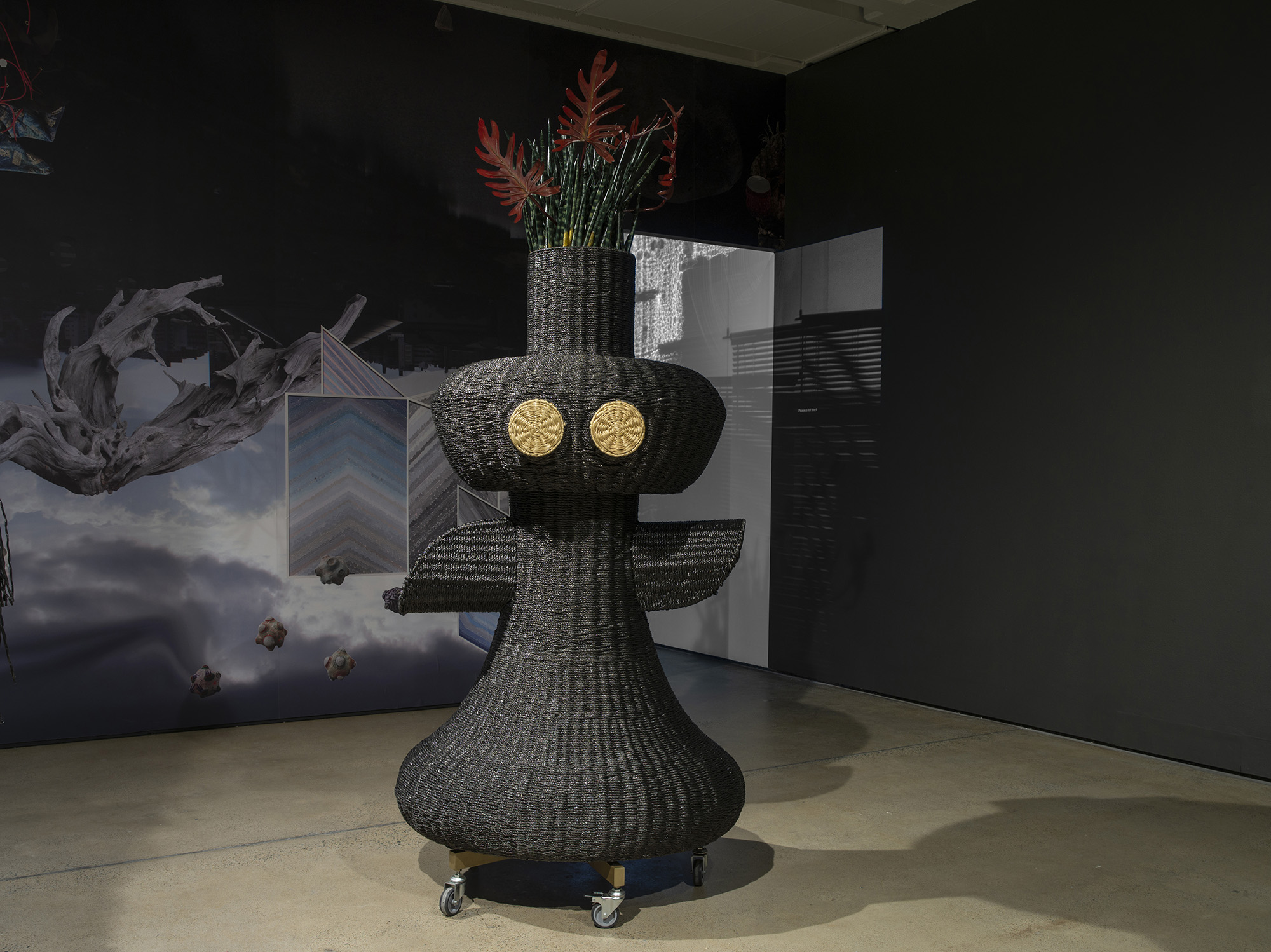Shows
Haegue Yang’s “Triple Vita Nestings”


It is not often that one sees the same group of works in different configurations and in quick succession. The 21st Biennale of Sydney opened in March with several newly commissioned and older works by South Korean artist Haegue Yang. In June, the biennale’s partnering institution, the Institute of Modern Art in Brisbane, presented the same series of installations, sculptures and videos, with additional artworks to further expand on the artist’s practice, revealing sculptural prowess, melancholic self-reflection and formal humor. Unlike the Sydney presentation, where all the artworks were crammed into a single room, three of the IMA’s galleries were utilized for “Triple Vita Nestings,” allowing the artworks room to breathe.
Visitors to the IMA were greeted by an intermingling of smells, shadows, lights and sounds in the first, darkened gallery. A hanging, ghostly figure with octopus-like tentacles fashioned from black, artificial straw—a work titled The Intermediate—Tinted UHHHHH Creature Inverted V (2017), from the multi-part Umbra Creatures by Rockhole (2017–18) series—imparted a surreal presence. The central multi-part installation in the room, Lethal Love (2008/2018), is composed of a series of venetian blinds, spotlights and scent emitters, which periodically sprayed aromas of wildflower and gunpowder in the air. The lights tracked across the floor and venetian blinds, the resulting shadows bringing into focus how, at different angles, the shades can either appear opaque or transparent—a key idea for the artist. Yang has stated that this work is inspired by the infamous German couple: Petra Kelly, ecofeminist and co-founder of the German Green Party; and her partner, Gert Bastian, an ex-military general and a politician with the German Green Party. However, references to the couple’s activist work remain opaque in the artwork: a recurring, almost poetic methodology in Yang’s practice.
Installed within Lethal Love was Video Trilogy (Unfolding Places, Restrained Courage, and Squandering Negative Spaces) (2004–06). The video series features mundane and fleeting scenes in urban landscapes—from train stations and underpasses to building sites and parks—across Amsterdam, Berlin, Brazil, Frankfurt, London and Seoul. These generic moments in transitory public spaces, marked by the lack of people, are delicately captured and narrated by three melancholic voices, each with their own poetic reflections on solitude and identity. There is a sense of displacement in the videos that is reflected formally in the misalignment of images
on screen and the voiceover script. Augmenting this sense of disorientation was the location of Video Trilogy, which had been installed with a view to the second gallery. In this next room, three anachronistic audiovisual works, Drunken Speech (2007), Doubles and Halves—Events with Nameless Neighbors (2009), and The Story of a Bear-Lady in a Sand Cave (2009/2011) similarly touched upon themes of being out of time or out of place.

The third gallery presented a grouping of Yang’s sculptures from the "Intermediates" (2015– ) series. The series weaves together familiar items—such as turbine vents, bells and plastic pot plants—but upends their functionalities to make the items unfamiliar in their new arrangement. For example, the plastic straw and string imbues the works with a sense of woven craft, yet their artificiality also infects the decorative elements with a utilitarian undertone. The result is a tension between ornamentation and abstraction. These ambiguous, richly-textured figures were shown alongside Multiple Mourning Room (2012), a digitally-printed wallpaper made in collaboration with Berlin-based designer Manuel Raeder. The print features photo documentation of Yang's past works mixed with rotated and flipped images of volcanic rocks in Jeju Island, South Korea; Japanese grave sites; root carvings; and furniture. All these objects are flattened and presented on a single plane; each held equal significance in their occupation of the same space and moment in time. The work is intended to be an ongoing project that exercises recontextualization of Yang’s own practice. Like the exhibition itself, the work functions as a mini-survey of the artist’s practice and conveys a life in perpetual reflection.
Haegue Yang’s “Triple Vita Nestings” is on view at the Institute of Modern Art, Brisbane, until August 30, 2018, and will tour to the Govett-Brewster Art Gallery, New Plymouth, in late 2018.







